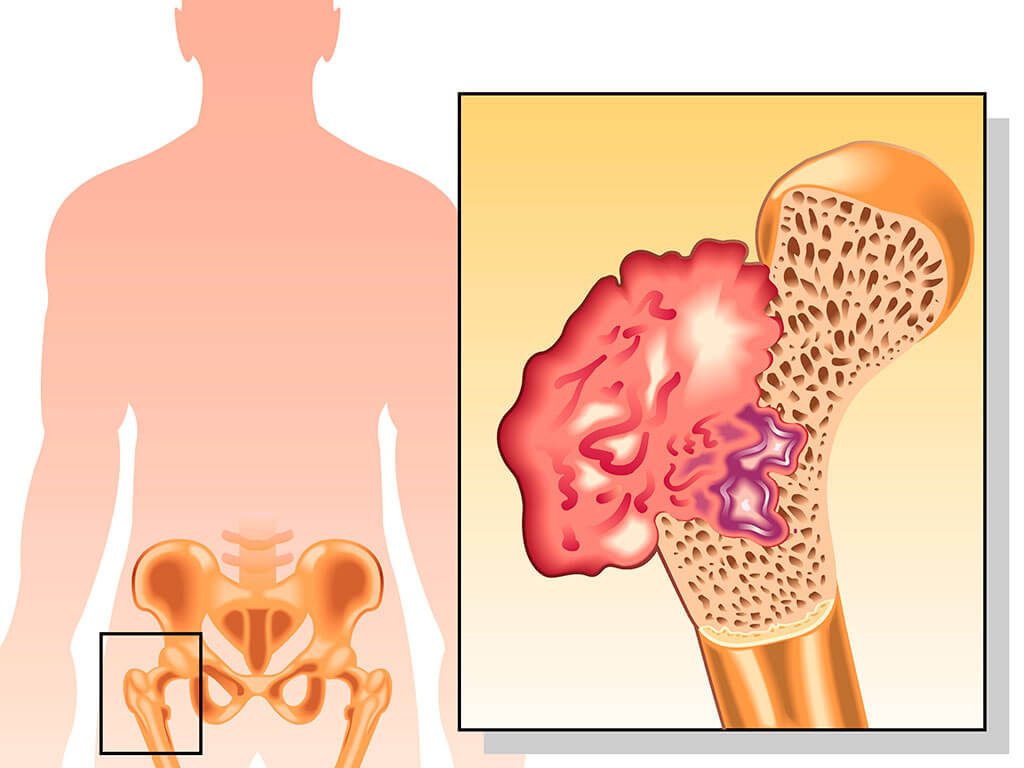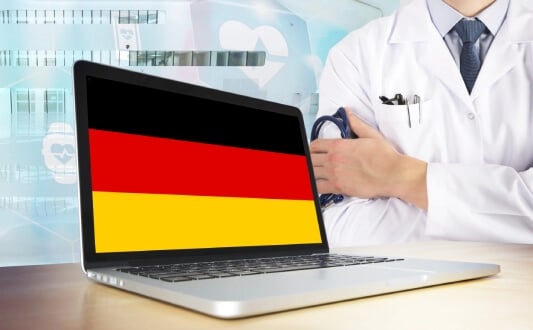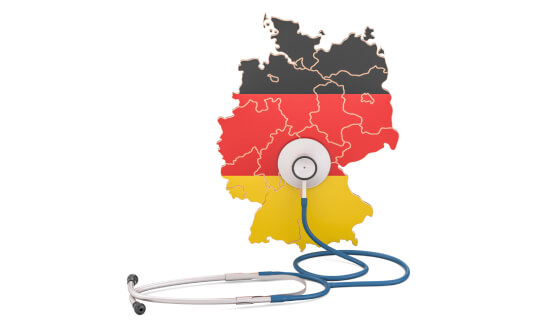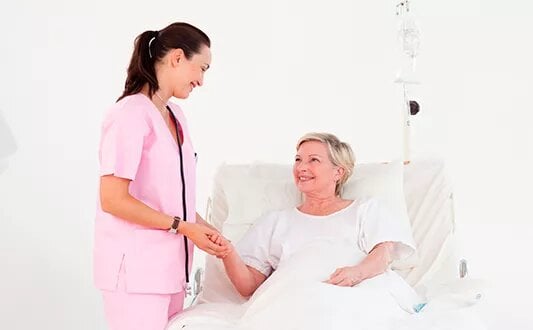According to the World Health Organization, osteochondroma is an osseous projection covered by a cartilage layer that arises on the external bone surface. Such neoplasms generally arise in the immature skeleton, i.e. in children and young adolescents. Debate still continues as to the benign or potentially malignant (pseudotumoral) nature of osteochondroma. However, it causes a number of worrying symptoms and can mask more severe or even malignant conditions. Differential diagnosis of osteochondroma is carried out in specialized orthopedic departments that have vast clinical experience in treating rare bone pathologies.
Content
- Clinical symptoms and instrumental examination
- Differential diagnosis
- Individual treatment options
- Treatment all over the globe with Booking Health
Clinical symptoms and instrumental examination
Osteochondroma causes bone deformity or destruction, due to the growth of its superficial cartilaginous part. It can reach a size of 5 cm or more. Thus, it causes pressure on the adjacent muscles, blood vessels, and nerves. This leads to various clinical manifestations, such as:
- different lengths of arms or legs (affection of the knee or shoulder joint);
- lower height compared to the mean age-specific values (in hip affection);
- presence of a palpable neoplasm (typically immobile and painless);
- tenderness of the nearby soft tissues and muscles;
- pain during physical activity (when a neoplasm is located under a tendon);
- disturbances of sensitivity, or cramps (in nerve involvement).
Nevertheless, such complaints and manifestations are not pathognomonic signs of osteochondroma. Only an experienced orthopedic doctor can determine the final diagnosis correctly. In addition to a clinical examination, the following instrumental studies are carried out during the diagnostics:
- An X-ray examination provides clear pictures of bones and other dense structures, revealing the bony component of a tumor.
- Imaging scans (CT, MRI) provide the details of soft tissue structure and cross-sectional images. An MRI also allows doctors to investigate the cartilaginous component of an osteochondroma. Detecting a medullary and cortical continuity of the neoplasm with the main bone is a pathognomonic osteochondroma feature.
- A biopsy specifies the histological structure of a neoplasm and helps in differentiating an osteochondroma from malignant formations. The procedure includes harvesting a tissue sample and requires local anesthesia.
Differential diagnosis
Based on the results of the clinical examination, laboratory tests, and visualizing studies, a doctor makes a provisional diagnosis. The final diagnosis is made after excluding all the pathologies that are similar to an osteochondroma in clinical manifestations and radiological picture. Determining the exact pathology is essential, as an osteochondroma may require no more than active surveillance, while an osteosarcoma requires urgent surgery.
Thus, the differential diagnosis for an osteochondroma includes both malignant and benign pathologies:
- Subperiosteal hematoma. This is a surface lesion connected with a history of prior trauma. A subperiosteal hematoma mainly consists of organized thrombi, but may also have cystic or mineralization areas.
- Subungual exostosis (Dupuytren exostosis). This is a superficial bone growth of unknown etiology. It is typically located near the nail bed and can be accompanied by skin ulceration or pain.
- Turret exostosis is an extracortical bone growth in the middle or proximal finger phalanx. It is not characterized by medullary continuity, as the exostosis takes place in the superficial cortical layers.
- Dysplasia epiphysealis hemimelica (Trevor disease) is a rare condition characterized by multiple osteochondromas development. In Trevor disease, osteochondromas arise from the epiphysis of the lower extremities’ bones. This is a hereditary condition without a malignant degeneration.
- Bizarre parosteal osteochondromatous proliferation (Nora lesion) arises in the hands and feet, as a superficial lesion without medullary continuity. Despite the risk of malignant degeneration, cases that lead to functional disturbances are eligible for surgical treatment.
- Juxtacortical chondroma is a superficial lesion that leads to the saucerization of the nearby cortex and periosteal reaction. This is a benign periosteal neoplasm with internal calcifications and requires surgery, it may recur if excised incompletely.
- Parosteal osteosarcoma is a malignant tumor arising on the surface of long bones (e.g. hip or humerus). In its advanced stages, it can invade the medullary space and, thus, radiologically resemble an osteochondroma.
Individual treatment options
When confirming the diagnosis of a benign tumor (e.g. osteochondroma, juxtacortical chondroma, subungual exostosis, etc.), the doctor chooses between a non-surgical and surgical treatment. In malignant tumors (e.g. a parosteal osteosarcoma) surgery is the first-line therapy.
Non-surgical treatment is mainly suitable for patients with solitary lesions that do not demonstrate significant growth. It includes watchful waiting, with regular visualizing studies (X-ray) and medications to control pain (if necessary). Nevertheless, timely treatment of benign tumors allows for preventing cosmetic deformities, mechanical complications (e.g. blocking the adjacent joint), or malignant transformations. Thus, in cases with osteochondroma growth or transformation, doctors consider more invasive interventions.
Surgery resection of osteochondroma or another benign tumor includes removing the neoplasm at the level of normal bone. The intervention is quite invasive, thus, it is performed under general anesthesia with a combination of intravenous medications and inhaled gasses. Additional surgical procedures may be required in cases with severe bone deformities (e.g. the bone is crooked), functional lesions (e.g. affection of tendon’s structure), or significant differences between the length of legs.
Treatment all over the globe with Booking Health
Making a correct diagnosis of osteochondroma and choosing an optimal therapeutic regimen may be rather challenging and require the teamwork of experienced orthopedic doctors and surgeons. Choosing a specialized healthcare facility and doctor is the first step towards a successful result. As an experienced international medical tourism operator, Booking Health offers informational support, as well as assistance in medical and non-medical issues:
- choosing the right hospital in Germany or another foreign country, based on the specialization and annual qualification profile;
- establishing communication with the desired orthopedic doctor;
- preparing a diagnostic or treatment program in advance, explaining all the procedures;
- providing a favorable cost for treatment, without overpricing and additional fees (saving up to 50%);
- booking the appointment in the hospital or the surgery date;
- monitoring the medical program at all stages;
- insurance against the cost of treatment increases, in case of complications (а coverage of €200,000, valid for 4 years);
- help with buying and forwarding medical products, if necessary;
- communication with clinics after the treatment’s completion;
- arrangement of follow-up tests, rehabilitation, and distant consultations;
- control of the final calculation and return of unspent funds;
- booking hotels and plane tickets and transfer organization;
- services of a personal medical coordinator and interpreter while you’re staying abroad.
If you leave a request on the “send request” form on the Booking Health website, a patient case manager or medical advisor will contact you the same day and discuss all the details of your condition with you.
Choose treatment abroad and you will for sure get the best results!
Authors:
The article was edited by medical experts, board certified doctors Dr. Nadezhda Ivanisova, Dr. Sergey Pashchenko. For the treatment of the conditions referred to in the article, you must consult a doctor; the information in the article is not intended for self-medication!
Sources:
Read:
Immunotherapy for Cancer Treatment
Dendritic cell therapy in cancer treatment in Germany - Vaccination against cancer
New Effective Treatments for Stage 4 Cancer: Innovations in Oncology
Don't know where to start?
Contact Booking Health







